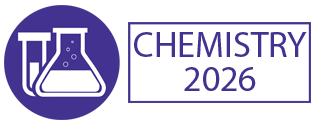Modified Drug Release
Modified drug release refers to the strategic alteration of the release kinetics of a pharmaceutical compound within the body, aiming to optimize therapeutic outcomes while minimizing adverse effects. This approach encompasses a variety of techniques and formulations designed to exert control over the timing, rate, and location of drug delivery. One common strategy involves the development of sustained-release formulations, where the drug is released gradually over an extended period, maintaining therapeutic concentrations in the bloodstream and thereby reducing the frequency of dosing. These formulations often employ specialized drug delivery systems such as hydrogels, liposomes, or microspheres, which encapsulate the active ingredient and control its release through diffusion, erosion, or other mechanisms.
Another approach to modified drug release involves targeting specific sites or tissues within the body to enhance efficacy and reduce systemic side effects. This can be achieved through the use of targeted drug delivery systems that exploit physiological or pathological characteristics of the target tissue, such as pH, temperature, or enzymatic activity. By encapsulating the drug within carriers that selectively release their cargo in response to these cues, researchers can achieve site-specific drug delivery, maximizing therapeutic effects while minimizing off-target effects.
In addition to sustained-release and targeted delivery approaches, modified drug release can also involve the use of novel drug delivery routes and technologies. For example, transdermal patches and implants allow for continuous and controlled release of drugs through the skin or implanted devices, offering advantages such as improved patient compliance and reduced dosing frequency. Similarly, advances in nanotechnology have enabled the development of nanoscale drug delivery systems capable of crossing biological barriers and delivering drugs to specific cellular targets, opening up new possibilities for personalized medicine and precision therapeutics.

Hossam A Gabbar
Ontario Tech University, Canada
Victor John Law
University College Dublin, Ireland
Alexander Bagaturyants
National Research Nuclear University MEPhI, Russian Federation
Sergey Suchkov
N.D. Zelinskii Institute for Organic Chemistry of the Russian Academy of Sciences, Russian Federation
Shree Niwas Chaturvedi
Centre for Aptitude Analysis and Talent Search, India
Pieter Samyn
SIRRIS, Belgium




Title : Advances in plasma-based radioactive waste treatment
Hossam A Gabbar, Ontario Tech University, Canada
Title : Unraveling the ultrastructure and functions of the neuronal membrane skeleton using super-resolution fluorescence microscopy
Zhou Ruobo, Djillali Liabes University of Sidi Bel Abbes, Algeria
Title : Solar box cooker dehydration, and relative humidity endpoint detection, of lamiaceae culinary leaves on the island of Crete
Victor John Law, University College Dublin, Ireland
Title : Nutrient and heavy metal loads from the Ribeiras to Coastal zones: A land-ocean continuum perspective in Madeira Island
Aracelis Del Carmen Narayan Rajnauth, University of Porto, Portugal
Title : Prospective polyoxometalate-based covalent organic framework heterogeneous catalysts
Arash Ebrahimi, Comenius University Bratislava, Slovenia
Title : Eliminating implant failure in humans with nano chemistry: 30,000 cases and counting
Thomas J Webster, Brown University, United States